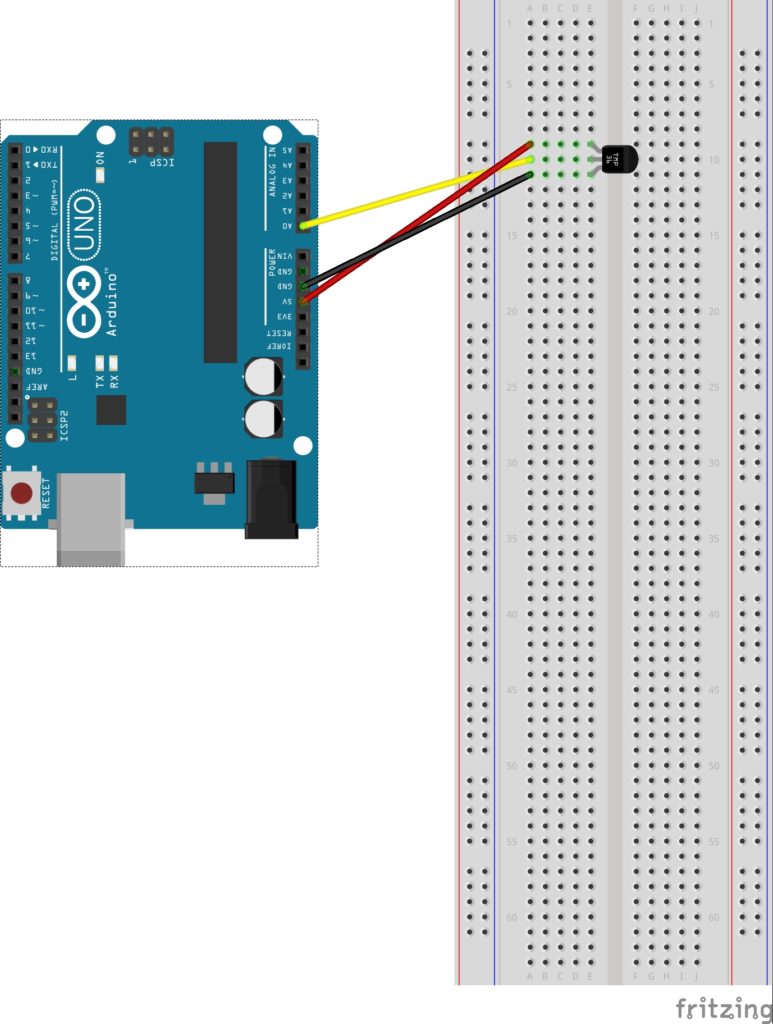You can use an Arduino Uno WiFi board to create sensors that are web accessible. This project allows you to read the temperature through a web browser.
Note: I found that the 5V pin on my Arduino Uno WiFi only actually outputs 4.85V. This means the temperature readings are off by about 5 degrees. Make sure to verify your project is reading the correct temperature, and if not tweak the math as need be.
Functional Parts in the Project:
- Arduino WiFi Rev 2 – https://store.arduino.cc/usa/arduino-uno-wifi-rev2
- Analog Temperature Sensor – https://amzn.to/2Rkkl3k
- Breadboard Kit – https://amzn.to/2Xih5ei
- 560 Piece Jumper Wire Kit – https://amzn.to/2MsCLjL


#include <SPI.h>
#include <WiFiNINA.h>
#define sensorPin A0
char ssid[] = "test";
char pass[] = "";
int keyIndex = 0;
int status = WL_IDLE_STATUS;
WiFiServer server(80);
void setup() {
Serial.begin(9600);
while (status != WL_CONNECTED) {
Serial.print("Attempting to connect to Network named: ");
Serial.println(ssid);
status = WiFi.begin(ssid, pass);
delay(10000);
}
server.begin();
Serial.print("SSID: ");
Serial.println(WiFi.SSID());
IPAddress ip = WiFi.localIP();
Serial.print("IP Address: ");
Serial.println(ip);
}
void loop() {
int reading = analogRead(sensorPin);
float voltage = reading * 5.0;
voltage /= 1024.0;
float temperatureC = (voltage - 0.5) * 100 ;
float temperatureF = (temperatureC * 9.0 / 5.0) + 32.0;
WiFiClient client = server.available();
if (client) {
Serial.println("new client");
String currentLine = "";
while (client.connected()) {
if (client.available()) {
char c = client.read();
Serial.write(c);
if (c == '\n') {
if (currentLine.length() == 0) {
client.print("Temperature: ");
client.println(temperatureF);
break;
} else {
currentLine = "";
}
} else if (c != '\r') {
currentLine += c;
}
}
}
client.stop();
Serial.println("client disonnected");
}
}



Be the first to comment